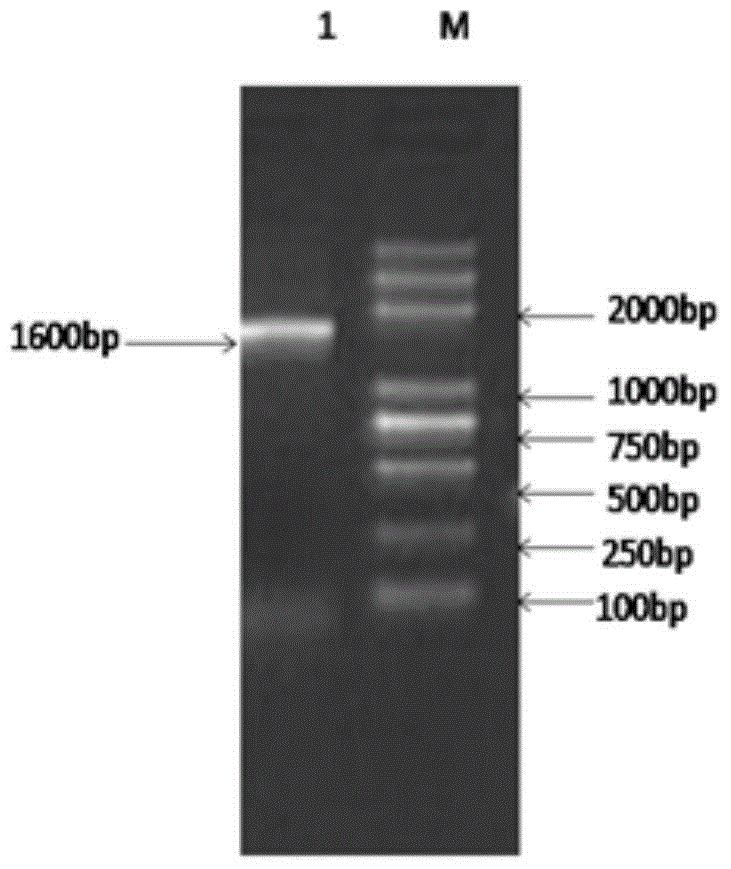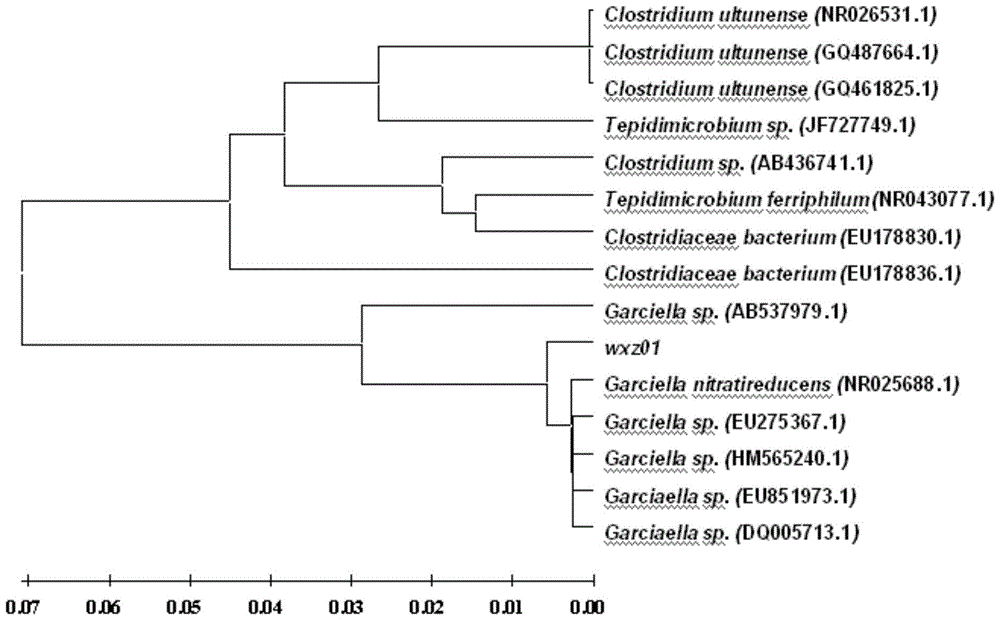A sulfate-reducing bacterium capable of producing ag/agcl nanoparticles
A nanoparticle and sulfate technology, applied in the direction of bacteria, microorganism-based methods, biochemical equipment and methods, etc., can solve problems such as poor stability, large nanoparticle size, and difficult shape control
- Summary
- Abstract
- Description
- Claims
- Application Information
AI Technical Summary
Problems solved by technology
Method used
Image
Examples
specific Embodiment approach 1
[0014] Embodiment 1: The sulfate-reducing bacteria that can prepare Ag / AgCl nanoparticles in this embodiment is Garciella sp.wxz01, which is preserved in the General Microbiology Center (CGMCC) of China Microbial Culture Collection Management Committee, and the preservation address is Beichen, Chaoyang District, Beijing No. 3, Courtyard No. 1, the preservation date is July 3, 2014, and the preservation number is CGMCC No: 9410.
[0015] In this embodiment, Garciella sp.wxz01 is a brevibacterium with a length of 1.0-2.2 μm and a width of 0.4-0.9 μm. It has no flagella and spores. The growing colonies are black, mostly elliptical, and a small amount of star-shaped. After a period of contact with air, The colonies turned white and most of the bacteria died.
[0016] In this embodiment, Garciella sp.wxz01 is a gram-negative bacterium, negative for catalase, positive for gelatin liquefaction, negative for starch hydrolysis, positive for methyl red test and indole test, negative for...
PUM
| Property | Measurement | Unit |
|---|---|---|
| particle diameter | aaaaa | aaaaa |
Abstract
Description
Claims
Application Information
 Login to View More
Login to View More - R&D
- Intellectual Property
- Life Sciences
- Materials
- Tech Scout
- Unparalleled Data Quality
- Higher Quality Content
- 60% Fewer Hallucinations
Browse by: Latest US Patents, China's latest patents, Technical Efficacy Thesaurus, Application Domain, Technology Topic, Popular Technical Reports.
© 2025 PatSnap. All rights reserved.Legal|Privacy policy|Modern Slavery Act Transparency Statement|Sitemap|About US| Contact US: help@patsnap.com



